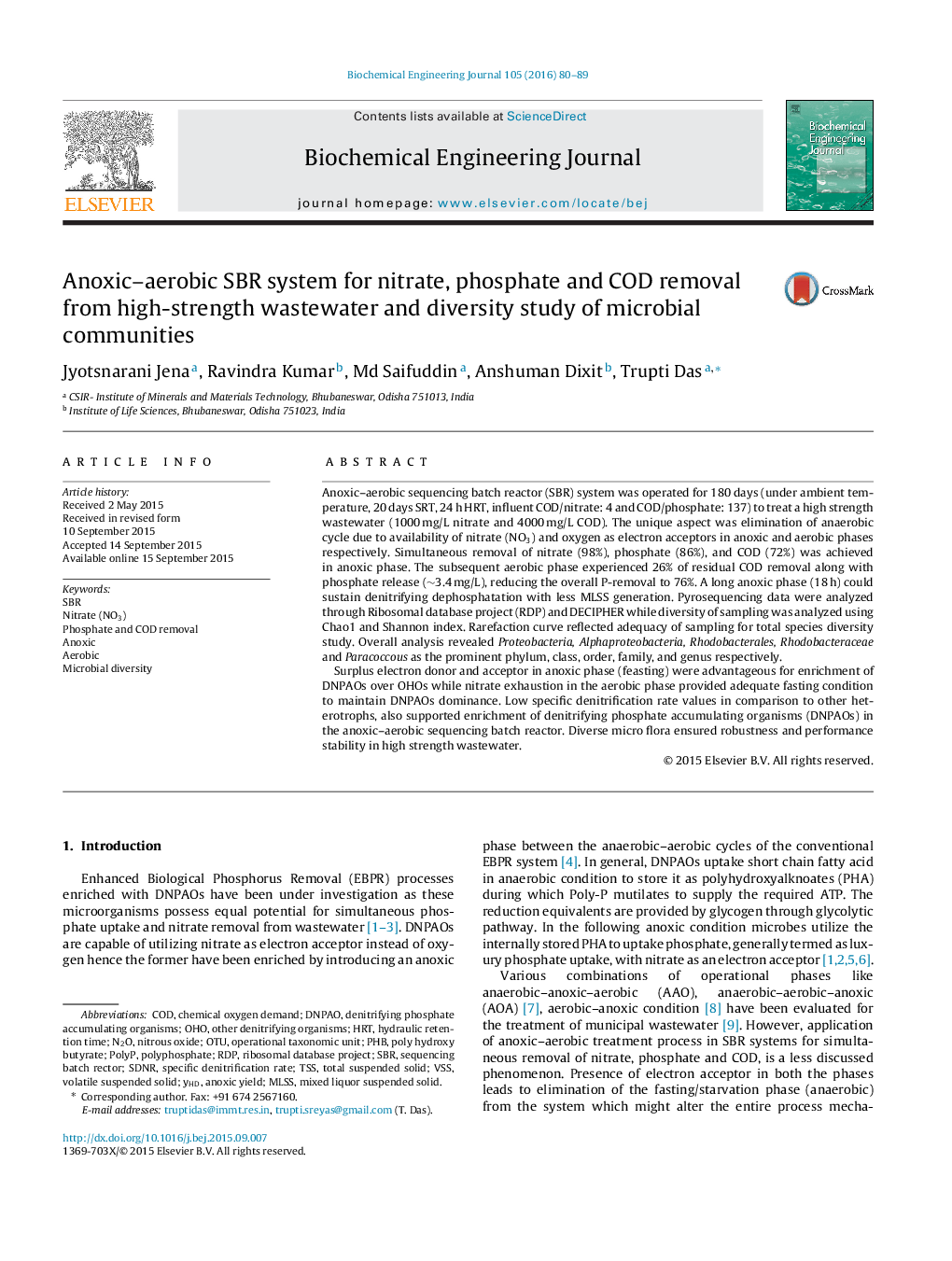| Article ID | Journal | Published Year | Pages | File Type |
|---|---|---|---|---|
| 2808 | Biochemical Engineering Journal | 2016 | 10 Pages |
•A biological process to treat high-strength wastetwater.•Simultaneous removal of nitrate phosphate and COD.•Metagenomic analysis for microbial diversity study.
Anoxic–aerobic sequencing batch reactor (SBR) system was operated for 180 days (under ambient temperature, 20 days SRT, 24 h HRT, influent COD/nitrate: 4 and COD/phosphate: 137) to treat a high strength wastewater (1000 mg/L nitrate and 4000 mg/L COD). The unique aspect was elimination of anaerobic cycle due to availability of nitrate (NO3) and oxygen as electron acceptors in anoxic and aerobic phases respectively. Simultaneous removal of nitrate (98%), phosphate (86%), and COD (72%) was achieved in anoxic phase. The subsequent aerobic phase experienced 26% of residual COD removal along with phosphate release (∼3.4 mg/L), reducing the overall P-removal to 76%. A long anoxic phase (18 h) could sustain denitrifying dephosphatation with less MLSS generation. Pyrosequencing data were analyzed through Ribosomal database project (RDP) and DECIPHER while diversity of sampling was analyzed using Chao1 and Shannon index. Rarefaction curve reflected adequacy of sampling for total species diversity study. Overall analysis revealed Proteobacteria, Alphaproteobacteria, Rhodobacterales, Rhodobacteraceae and Paracoccous as the prominent phylum, class, order, family, and genus respectively.Surplus electron donor and acceptor in anoxic phase (feasting) were advantageous for enrichment of DNPAOs over OHOs while nitrate exhaustion in the aerobic phase provided adequate fasting condition to maintain DNPAOs dominance. Low specific denitrification rate values in comparison to other heterotrophs, also supported enrichment of denitrifying phosphate accumulating organisms (DNPAOs) in the anoxic–aerobic sequencing batch reactor. Diverse micro flora ensured robustness and performance stability in high strength wastewater.
